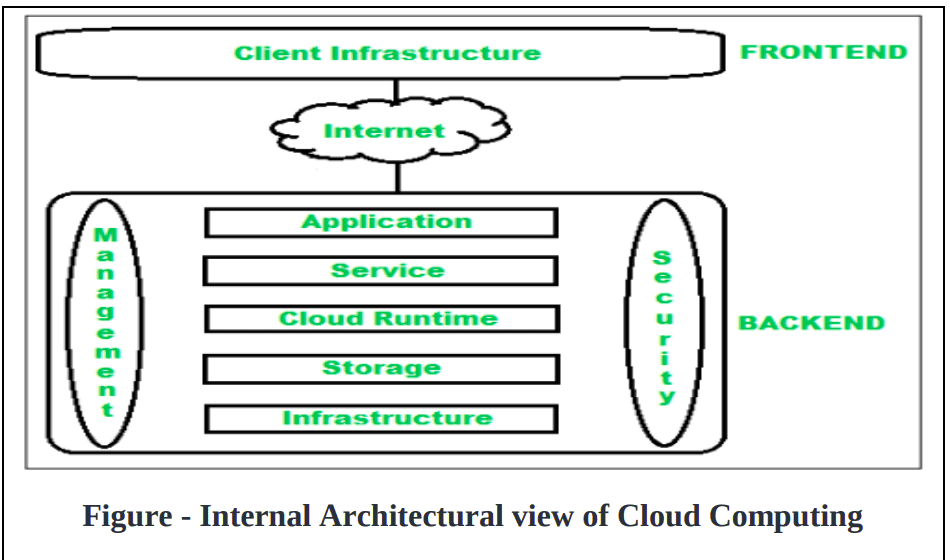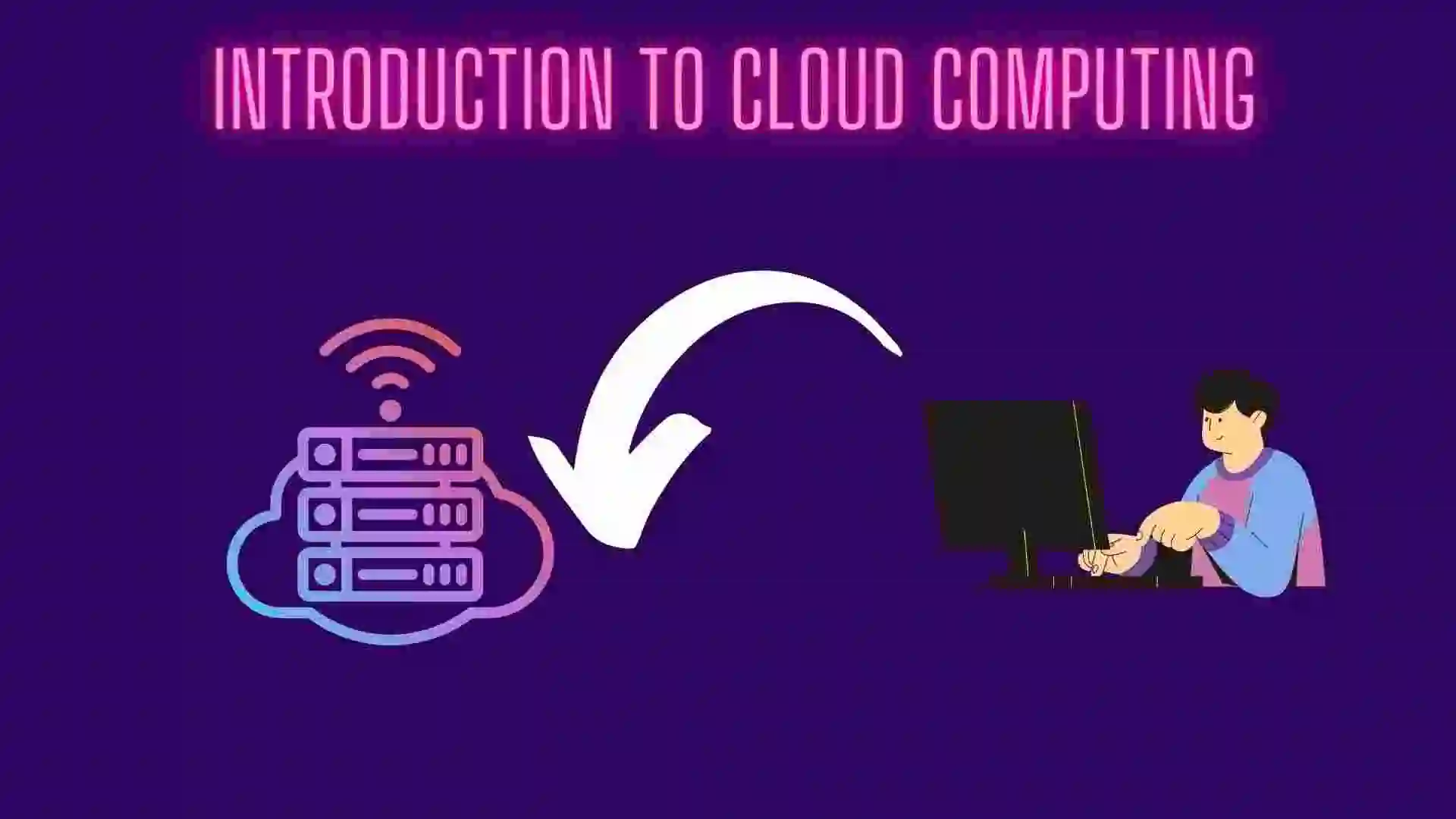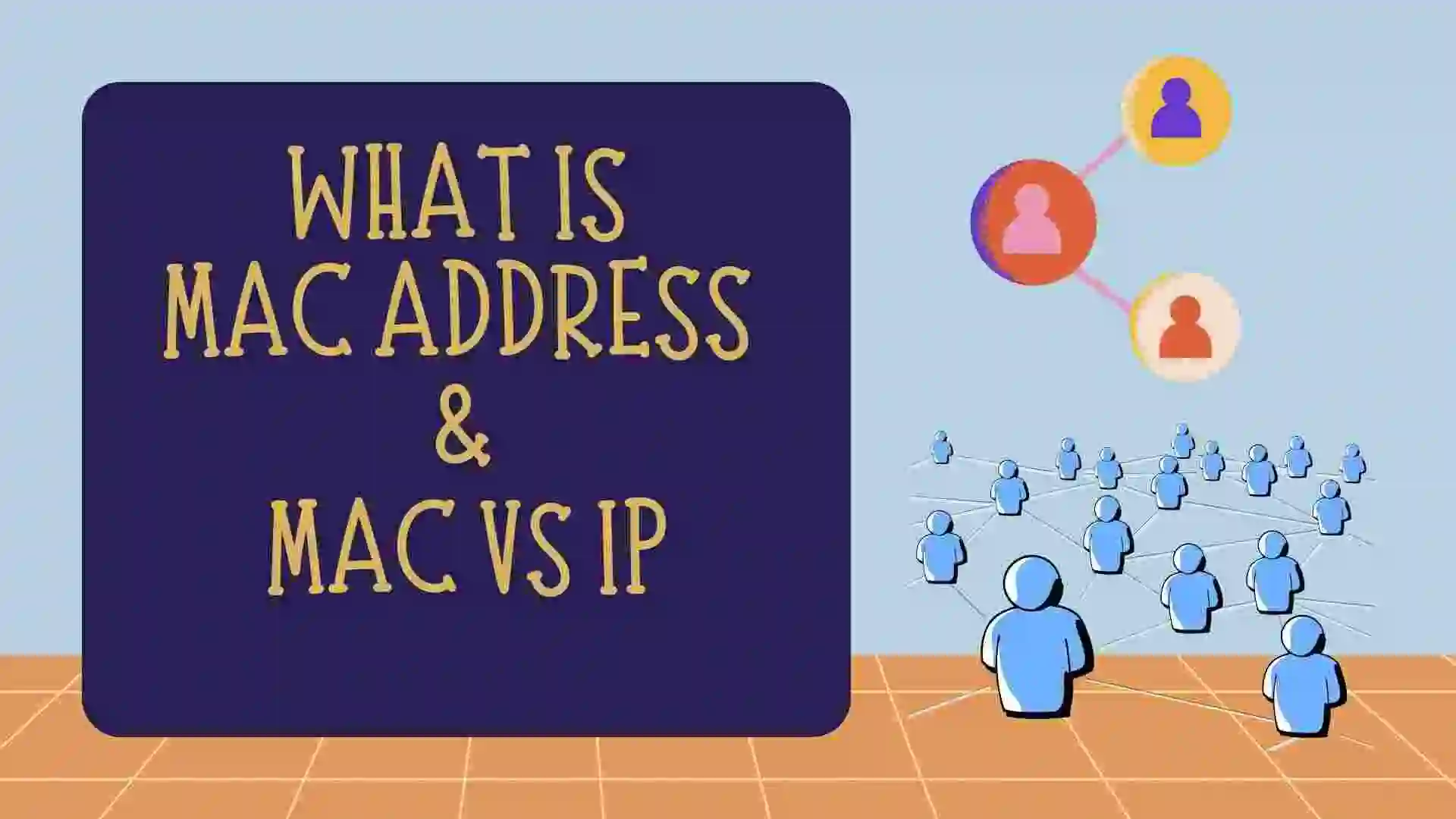In this blog, we will learn about Cloud Computing. It is one of the important topics and it has great scope in the future. We will see its architecture, advantages, and disadvantages. So let’s get started with the topic.
Table of Contents
- Introduction
- History
- Characteristics
- Advantages
- Disadvantages
- The Architecture of Cloud Computing
- Types of Cloud
- Examples of Cloud Computing
- Conclusion
- FAQ
- Articles on Computer Networks
- Articles on CyberSecurity
Introduction
Cloud computing is a type of computing that allows users to access computing resources and services over the Internet, instead of using their own hardware and software. It involves the delivery of computing services, including servers, storage, databases, software, analytics, and networking, over the internet or “the cloud.”
The cloud computing model provides on-demand access to a shared pool of computing resources that can be rapidly provisioned and released with minimal management effort or service provider interaction. This makes it possible for businesses and organizations of all sizes to quickly and easily scale their IT infrastructure up or down as needed, without having to invest in and maintain their own physical infrastructure.
It is based on a shared infrastructure model, which means that multiple users can access and use the same resources simultaneously. This sharing of resources makes it more cost-effective and efficient than traditional computing models, and it can also provide greater flexibility and scalability.
History
The history of cloud computing can be traced back to the 1950s when mainframe computers were first introduced. These early mainframe systems allowed multiple users to access a centralized computing resource, which was a precursor to the shared infrastructure model of cloud computing.
In the 1960s, time-sharing systems were developed, which allowed multiple users to share access to a single computer system. This was a significant step forward in the evolution of cloud computing, as it demonstrated the potential for sharing computing resources over a network.
In the 1990s, the Internet became widely available, and companies began to explore the possibility of delivering computing services over the Internet. This led to the development of Application Service Providers (ASPs), which offered software applications and services over the Internet.
In the early 2000s, Amazon Web Services (AWS) was launched, providing cloud-based computing services to businesses and organizations. This was a pivotal moment in the history of cloud computing, as it demonstrated the potential for delivering computing resources over the internet on a large scale.
In 2006, Google launched its cloud computing platform, Google App Engine, which provided a platform for developing and hosting web applications in the cloud.
In 2008, the OpenStack project was launched, which aimed to create an open-source cloud computing platform for public and private clouds. This project has since grown to become one of the most popular open-source cloud computing platforms in the world.
Today, cloud computing has become an essential part of modern IT infrastructure, with companies of all sizes and industries relying on cloud-based services to power their operations. The history of cloud computing has been characterized by a series of technological advancements that have helped drive the adoption and evolution of cloud-based computing services.
Characteristics
Some of the main characteristics of cloud computing include:
- On-demand self-service: It allows users to access computing resources and services on demand, without requiring human intervention from the service provider.
- Broad network access: Its services can be accessed over the internet from a variety of devices and locations, making them accessible to users around the world.
- Resource pooling: Cloud computing providers pool their computing resources, allowing multiple users to access the same physical resources simultaneously.
- Rapid elasticity: It allows computing resources to be rapidly provisioned and released to meet changing demands, allowing users to quickly scale their IT infrastructure up or down as needed.
- Measured service: Cloud computing services are typically billed based on usage, allowing users to pay only for the resources and services they consume.
- Scalability: Allows users to scale their IT infrastructure up or down as needed, without requiring significant investments in new hardware or software.
- Availability and resilience: Cloud computing providers typically offer robust backup and disaster recovery solutions, ensuring that data and services are always available and protected.
Overall, these characteristics make it a highly flexible, scalable, and cost-effective option for businesses and organizations of all sizes.
Advantages
Some of the key advantages of cloud computing include:
- Cost savings: It eliminates the need for businesses to invest in and maintain their own physical IT infrastructure, which can be expensive and time-consuming. Instead, they can use the resources and services provided by cloud computing providers on an as-needed basis, paying only for what they use.
- Scalability: Allows businesses to quickly and easily scale their IT infrastructure up or down as needed, without having to make significant investments in new hardware or software. This makes it easier for businesses to respond to changing market conditions or business needs.
- Accessibility: Cloud computing services can be accessed from anywhere with an internet connection, making it easy for businesses to support remote work and mobile devices.
- Reliability: Providers typically offer robust security and backup solutions, which can help ensure that data is always available and protected. This can be especially important for businesses that rely heavily on data and IT systems to operate.
- Innovation: It can help facilitate innovation by providing businesses with access to the latest technologies and tools without requiring them to invest in costly research and development. This can be particularly valuable for small and medium-sized businesses that may not have the resources to develop new technologies in-house.
- Collaboration: It can facilitate collaboration and teamwork by allowing multiple users to access and work on the same data and applications simultaneously, regardless of their location.
Overall, the advantages of cloud computing can help businesses reduce costs, increase efficiency, and remain competitive in a rapidly changing business landscape.
Disadvantages
While cloud computing offers many benefits, it also has some disadvantages that businesses and organizations should be aware of. Some of the key disadvantages of cloud computing include:
- Security risks: Storing data in the cloud can present security risks, as data is stored on servers that are owned and managed by third-party providers. While cloud computing providers typically offer robust security measures, businesses must still take steps to protect their data from unauthorized access or theft.
- Dependence on Internet connectivity: Services are dependent on Internet connectivity, which can be disrupted by network outages, natural disasters, or other events. This can cause downtime and loss of productivity for businesses.
- Limited control: Businesses that rely on cloud computing have limited control over their IT infrastructure, as it is managed by third-party providers. This can limit the ability of businesses to customize their IT systems to meet their specific needs.
- Compliance concerns: Businesses that operate in regulated industries may face compliance concerns when storing data in the cloud, as they may be subject to strict data privacy and security regulations.
- Costs: While it can offer cost savings, it can also be expensive, especially for businesses that require large amounts of storage or computing power.
Overall, businesses must carefully evaluate the advantages and disadvantages of cloud computing before deciding whether it is the right solution for their needs. It is important to weigh the potential benefits against the potential risks and costs associated with cloud computing.
The Architecture of Cloud Computing
The architecture of Cloud Computing is completely divided into two parts:
- Frontend
- Backend

A) Frontend
In cloud computing, the front end refers to the user-facing part of a cloud computing system. It includes the user interface, which allows users to interact with the cloud-based services and applications, and the client-side software that enables access to those services.
It typically includes web browsers, mobile apps, and desktop applications that connect to the cloud infrastructure via APIs and other protocols. The frontend software is responsible for presenting data and information to users in a clear and user-friendly manner, as well as handling user input and transmitting it to the backend of the cloud computing system for processing.
The front end is crucial for providing a seamless user experience and enabling users to easily access and utilize cloud-based services and applications. It is often developed using modern web technologies such as HTML, CSS, and JavaScript, and may leverage various frameworks and libraries to streamline development and improve performance.
B) Backend
In cloud computing, the backend refers to the infrastructure and software that is responsible for providing the core functionality of the cloud-based services and applications. The backend is part of the cloud computing system that runs on servers and other hardware in data centers and is responsible for storing, processing, and managing data and other resources.
It typically includes databases, application servers, virtual machines, containers, and other infrastructure components. These components work together to provide the computing resources needed to run cloud-based services and applications, including storage, processing power, and network connectivity.
In addition to providing the core infrastructure for cloud computing, the backend also includes a variety of software tools and services that help developers and administrators manage and deploy cloud-based applications. These may include configuration management tools, monitoring and logging services, security and compliance tools, and automation frameworks.
It is critical for ensuring the reliability, scalability, and security of cloud-based services and applications. It requires advanced expertise in areas such as distributed systems, database management, and network infrastructure, and is typically managed by cloud providers or specialized teams within organizations that deploy and maintain cloud-based services.
Types of Cloud
There are three main types of cloud computing: public cloud, private cloud, and hybrid cloud. Each type of cloud computing offers different levels of control, flexibility, and cost-effectiveness to meet the needs of different users and organizations.
A) Public Cloud
The public cloud is provided by third-party vendors that offer computing resources, such as storage, processing power, and network connectivity, over the Internet. These resources are shared among multiple users and organizations, and users typically pay for only the resources they consume. Public cloud services are highly scalable and can be accessed from anywhere with an internet connection. Examples of public cloud providers include Amazon Web Services (AWS), Microsoft Azure, and Google Cloud Platform.
B) Private Cloud
Private cloud refers to cloud computing resources that are used exclusively by a single organization. Private clouds can be hosted on-premises or in data centers, and are typically managed by the organization’s IT department. Private clouds offer greater control, security, and customization than public clouds, but they can be more expensive and require more technical expertise to manage.
C) Hybrid Cloud
A hybrid cloud is a combination of public and private cloud computing. In a hybrid cloud, an organization uses both public and private cloud resources, and data and applications can be moved between the two environments as needed. This allows organizations to take advantage of the scalability and cost-effectiveness of public cloud computing while retaining greater control and security over critical data and applications.
Examples of Cloud Computing
Some common examples of cloud computing applications include:
- Cloud storage: Cloud storage services, such as Dropbox, Google Drive, and Microsoft OneDrive allow users to store and access their files and data from anywhere with an internet connection.
- Software-as-a-Service (SaaS): SaaS applications, such as Salesforce, Slack, and Zoom, provide users with access to software applications over the internet, without the need for local installations or updates.
- Infrastructure-as-a-Service (IaaS): IaaS providers, such as Amazon Web Services (AWS), Microsoft Azure, and Google Cloud Platform, offer computing infrastructure, such as virtual machines, storage, and networking, over the internet.
- Platform-as-a-Service (PaaS): PaaS providers, such as Heroku and Microsoft Azure App Service, provide a platform for developers to build, deploy, and manage their applications in the cloud.
- Disaster recovery and backup: Cloud-based disaster recovery and backup solutions, such as Amazon S3, Google Cloud Storage, and Microsoft Azure Backup, provide businesses with a secure and reliable way to store and recover critical data in the event of a disaster or outage.
- Internet of Things (IoT): Cloud computing is used in IoT applications, where connected devices generate and transmit large amounts of data to cloud-based systems for storage, analysis, and processing. Examples of IoT cloud computing platforms include AWS IoT and Microsoft Azure IoT.
These are just a few examples of the many ways cloud computing is used in today’s digital landscape. As cloud technology continues to evolve and mature, we can expect to see even more innovative applications and use cases emerge.
Conclusion
Overall, cloud computing has become an essential part of modern IT infrastructure, offering businesses and organizations of all sizes a range of benefits and advantages over traditional computing models.
Note: This blog is mainly based on the MCA IDOL Syllabus.
FAQ
Cloud computing is a type of computing that allows users to access computing resources and services over the internet, instead of using their own hardware and software. It involves the delivery of computing services, including servers, storage, databases, software, analytics, and networking, over the internet, or “the cloud.”
There are three types of clouds in cloud computing:
1) Public Cloud:
The public cloud is provided by third-party vendors that offer computing resources, such as storage, processing power, and network connectivity, over the Internet.
2) Private Cloud:
Private cloud refers to cloud computing resources that are used exclusively by a single organization.
3) Hybrid Cloud:
A hybrid cloud is a combination of public and private cloud computing. In a hybrid cloud, an organization uses both public and private cloud resources, and data and applications can be moved between the two environments as needed.
1) Cost savings
2) Scalability
3) Collaborations
4) Accessibility
5) Innovations
Articles on Computer Networks
- Introduction to Computer Networking | What is Computer Network
- What are Topology & Types of Topology in Computer Network
- What is FootPrinting in Cyber Security and its Types, Purpose
- Distributed Shared Memory and Its Advantages and Disadvantages
- What is a VPN? How does a VPN Work? What VPN should I use?
- What is an Internet and How the Internet Works
- What is a Website and How Does a Website or web work?
- Introduction to Virus and Different Types of Viruses in Computer
- What is TCP and its Types and What is TCP three-way Handshake
- What is the UDP Protocol? How does it work and what are its advantages?
- What is an IP and its Functions, What is IPv4 and IPv6 Address
- What is MAC Address and its Types and Difference MAC vs IP
- What is ARP and its Types? How Does it Work and ARP Format
- Sessions and Cookies and the Difference Between Them
- What is the ICMP Protocol and its Message Format?
- What is Big Data? Characteristics and Types of Big Data
- Disciplines of CyberSecurity | What are the goals of CyberSecurity?
- What is Firewall, Features, Types and How does the Firewall Work?
- Network Scanning, Types, and Stealth Scan in Computer Network
- Cryptography and its Types in Ethical Hacking
- Tor Browser and How Does It Work | Onion Router Tutorial
- Proxy Server, Advantages, Difference between Proxy Server & VPN
- DHCP Protocol and What Are the Pros and Cons of DHCP
- Intrusion Detection System(IDS) and What are the types of IDS
- Domain Name Server, How Does It Work, and its advantages
- Telnet: Introduction, How Does it Work, and Its Pros and Cons
- SOC: Introduction, Functions performed by SOC, and its Pros
- What is SIEM? | What is the Difference between SIEM and SOC?
- Application Layer in OSI Model | OSI Model Application Layer
- What is SSL Protocol or SSL/TLS and SSL Handshake, and Architecture of SSL
- What are Servers, how do they work, and its different Types
- Network Devices-Router, Switch, Hub, etc in Computer Network
- Connection Oriented and Connection-less Services in Network
- Physical Layer in OSI Model | OSI Model Physical Layer
- Presentation Layer in OSI Model | OSI Model Presentation Layer
- Session layer in OSI Model | OSI Model Session layer
- Transport Layer in OSI Model | Computer Network Transport Layer
- Network Layer in OSI Model | OSI Model Network Layer
- Data Link Layer in OSI Model | OSI Model Data Link Layer
- Block Diagram of Communication System with Detailed Explanation
Articles on CyberSecurity
- What is Ethical Hacking || Introduction to Ethical Hacking
- System Security and Protection in Cybersecurity
- HIPAA (Health Insurance Portability and Accountability Act) in Cyber Security Law
- PCI DSS (Physical Card Industry and Data Security Standard) in Cyber Security Law
- What is GLBA (Gramm-Leach-Bliley Act) in Cyber Security Law?
- What is NIST (National Institute of Standards and Technology)?
- What is GDPR (General Data Protection Regulation)?
- What are ISO 27001 and CIA in Cyber Security Law?
- What is HITRUST Framework in Cyber Security Law
- Ethical Hackers, Types, and Responsibilities of Ethical Hackers
- VAPT, Benefits, and What are the Roles of VAPT in Company
- What is Pen Testing, Requirement, Types, and Roles of PenTester




